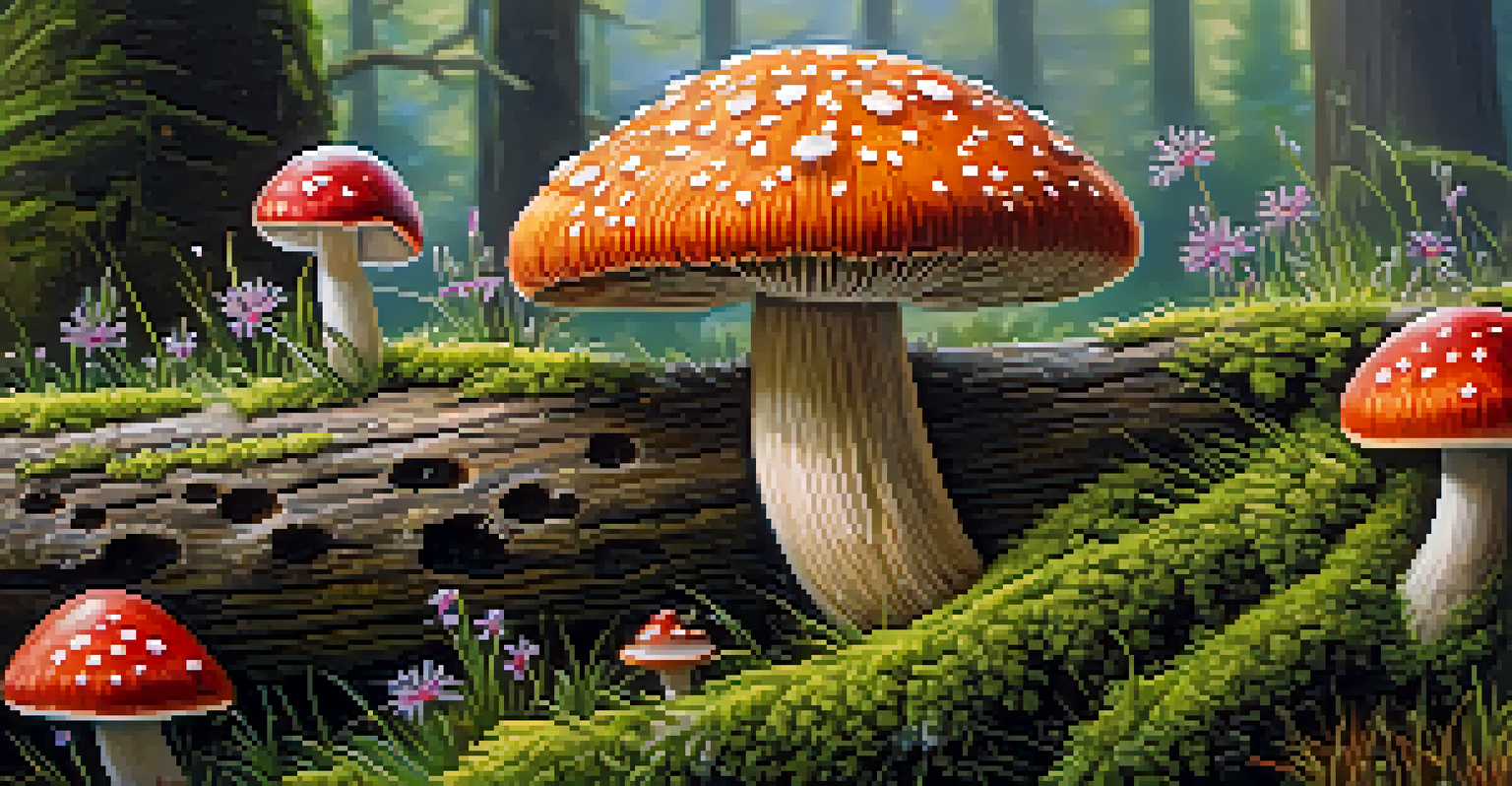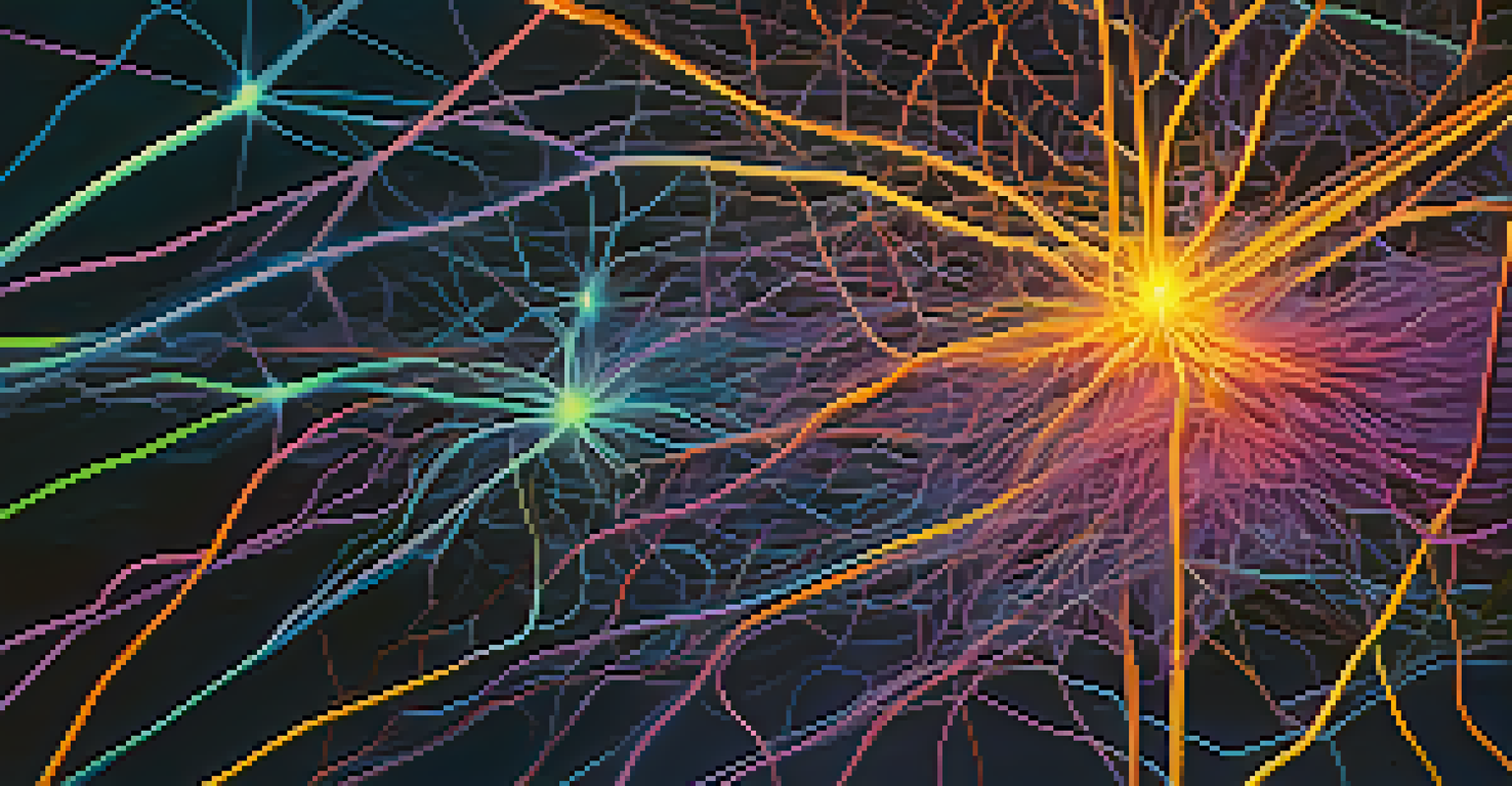Neuropharmacological Basis of Psychedelic Experience Explained

What Are Psychedelics and Their Historical Context?
Psychedelics are substances that alter perception, mood, and cognition. Historically, they have been used in various cultures for spiritual and therapeutic purposes. From ancient rituals to modern psychotherapy, these substances have played a significant role in human experience.
Psychedelics are not a panacea, but they can be a tool for the healing process.
The term 'psychedelic' itself comes from the Greek words meaning 'mind-manifesting,' which reflects their ability to unlock altered states of consciousness. Notable examples include LSD, psilocybin (found in magic mushrooms), and mescaline. Each has a unique history tied to both cultural significance and scientific research.
In recent years, there's been a resurgence in the study of psychedelics, particularly in understanding their potential to treat mental health disorders. This shift marks a fascinating intersection of ancient wisdom and modern science.
How Psychedelics Affect Brain Chemistry
Psychedelics primarily interact with the brain's serotonin receptors, particularly the 5-HT2A receptor. This interaction plays a crucial role in altering sensory perception and mood. When psychedelics bind to these receptors, they can enhance communication between different brain regions.

This increased connectivity can lead to altered thought patterns and a sense of unity or interconnectedness. For many users, this means experiencing vivid visual and auditory hallucinations, or feeling a deep emotional connection to their surroundings. It's akin to tuning into a radio station where everything sounds more vibrant and alive.
Psychedelics: Ancient and Modern Uses
Psychedelics have a rich history of use in spiritual and therapeutic contexts, bridging ancient practices with contemporary mental health research.
Understanding the neuropharmacological basis of these experiences is essential for researchers. It provides insights into how these substances might help with conditions like depression, PTSD, and anxiety, potentially paving the way for new therapeutic avenues.
The Role of Neurotransmitters in Psychedelic Experiences
Neurotransmitters are the chemical messengers in our brain, and they play a vital role in how psychedelics affect our mood and perception. Aside from serotonin, dopamine and norepinephrine also come into play, influencing feelings of pleasure and alertness. This complex cocktail of neurotransmitters is what shapes the psychedelic experience.
The mind is like a parachute. It doesn’t work if it is not open.
For instance, the modulation of dopamine can enhance feelings of joy or euphoria, while changes in norepinephrine levels might heighten sensory perception. Imagine your favorite song played at a higher volume; everything feels more intense and engaging.
By studying these neurotransmitter interactions, scientists can better understand both the potential benefits and risks of psychedelic use. This knowledge is crucial in ensuring safe and effective therapeutic applications in the future.
Psychedelics and Brain Connectivity: A New Perspective
When psychedelics are ingested, they can significantly alter brain connectivity patterns. Brain imaging studies have shown that psychedelics can create a more interconnected brain network, often referred to as 'hyperconnectivity.' This shift can lead to the dissolution of the ego, or a feeling of 'self' that is less distinct.
Think of it like a busy highway suddenly opening up to a scenic route where all the roads connect in unexpected ways. Users often report feelings of unity with the universe or deep insights that seem to transcend ordinary thought. This experience can be both enlightening and overwhelming.
Impact on Brain Connectivity
Psychedelics enhance brain connectivity, promoting a sense of unity and potentially aiding in the treatment of mental health disorders.
Research indicates that this altered connectivity might be key to the therapeutic effects of psychedelics. By breaking down rigid thought patterns associated with mental health disorders, these substances could help individuals gain new perspectives and foster healing.
The Therapeutic Potential of Psychedelics
Recent studies suggest psychedelics have promising therapeutic potential, especially in treating conditions like depression, anxiety, and PTSD. The way these substances can catalyze profound personal insights and emotional breakthroughs is particularly compelling for mental health treatment. Many participants in clinical trials have reported lasting improvements in their mental well-being.
The therapeutic sessions often combine psychedelic experiences with psychotherapy, creating a safe space for individuals to process their experiences. It's like having a guide on a journey through your mind, helping you explore areas that may have been previously blocked or ignored.
As research continues to evolve, the goal is to integrate psychedelics into mainstream mental health care responsibly. This could revolutionize how we approach mental health treatment, moving beyond traditional methods to more holistic and transformative experiences.
Challenges and Risks of Psychedelic Use
While the potential benefits of psychedelics are exciting, it's important to recognize the challenges and risks involved. Not everyone will have a positive experience, and some may encounter overwhelming emotions or anxiety. This phenomenon, often referred to as a 'bad trip,' underscores the need for careful supervision and support.
Moreover, the legal status of many psychedelics complicates research and access. In some regions, these substances are still classified as illegal, which poses barriers to scientific studies. It's like trying to solve a mystery without all the clues available; progress can be slow and frustrating.
Therapeutic Promise and Risks
While psychedelics show significant therapeutic potential, challenges such as 'bad trips' and legal restrictions highlight the need for careful, supervised use.
As the conversation around psychedelics continues to evolve, addressing these challenges will be crucial. Establishing safe protocols for use and ensuring comprehensive education about the risks can help maximize benefits while minimizing potential harms.
Future Directions in Psychedelic Research
The future of psychedelic research looks promising, with a growing number of studies exploring their therapeutic potential. Researchers are investigating various compounds and their effects on different mental health conditions. This expansive interest is reminiscent of the early days of medicine, where new treatments were being discovered and tested.
Furthermore, there's an increasing emphasis on understanding the mechanisms behind these substances. As we delve deeper into the neuropharmacological aspects, we may uncover new ways to harness their power safely and effectively. Imagine unlocking a hidden door in the brain that leads to improved mental health.

Ultimately, the goal is to create a comprehensive framework for psychedelic therapy, blending science with compassion. This approach could usher in a new era of mental health treatment, one where psychedelics are not just substances of curiosity but vital tools for healing.